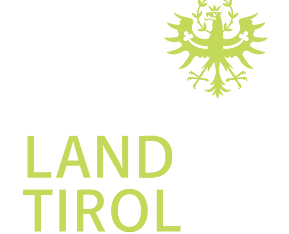Words to Know, Actions to Show.
.gif)
CONSENT
CONSENT
What does "Consent" mean?
Only yes means yes!
Consent = Agreement, Approval, Permission
An action carried out with consent is mutual and agreed upon.
Consent and Sex
Consent is what differentiates sex from sexual violence. Any sexual act performed without the consent of all parties involved is sexual violence.
The fundamental prerequisite for consent is the ability to give permission. If a person is under the influence of legal or illegal substances, this ability may be impaired. If the person is unconscious, they are never capable of giving consent, even if they previously gave consent while conscious.
Consent and Substance Use
The principle of consent also applies to substance use.
On one hand, the involuntary and/or unknowing administration of legal or illegal substances (also known as spiking) is clearly an act carried out without consent.
On the other hand, sexual violence is often perpetrated against individuals who were unknowingly or involuntarily administered substances beforehand.
Consent in Clubs
Unfortunately, sexual violence and spiking also occur in nightlife settings. This is why club operators and staff can embrace and promote the principle of consent. For example, posters in restrooms or at entrances can communicate and explain the principle effectively. Practical guidelines, such as the F-R-I-E-S principle, demonstrate how to establish consent in clear terms.
Act according to the F-R-I-E-S Principle!
F - FREELY GIVEN: Both partners must have the freedom to say yes or no. Consent must be free from pressure, violence, or manipulation!
R - REVERSIBLE: Anyone can change their mind at any time, even in the middle of intimacy!
I - INFORMED: Both partners must fully understand what they are consenting to each time.
E - ENTHUSIASTIC: Both partners should be excited and genuinely interested in what is happening.
S - SPECIFIC: Consent for specific act.
CONSENT
CONSENT
What does "Consent" mean?
Only yes means yes!
Consent = Agreement, Approval, Permission
An action carried out with consent is mutual and agreed upon.
Consent and Sex
Consent is what differentiates sex from sexual violence. Any sexual act performed without the consent of all parties involved is sexual violence.
The fundamental prerequisite for consent is the ability to give permission. If a person is under the influence of legal or illegal substances, this ability may be impaired. If the person is unconscious, they are never capable of giving consent, even if they previously gave consent while conscious.
Consent and Substance Use
The principle of consent also applies to substance use.
On one hand, the involuntary and/or unknowing administration of legal or illegal substances (also known as spiking) is clearly an act carried out without consent.
On the other hand, sexual violence is often perpetrated against individuals who were unknowingly or involuntarily administered substances beforehand.
Consent in Clubs
Unfortunately, sexual violence and spiking also occur in nightlife settings. This is why club operators and staff can embrace and promote the principle of consent. For example, posters in restrooms or at entrances can communicate and explain the principle effectively. Practical guidelines, such as the F-R-I-E-S principle, demonstrate how to establish consent in clear terms.
Act according to the F-R-I-E-S Principle!
F - FREELY GIVEN: Both partners must have the freedom to say yes or no. Consent must be free from pressure, violence, or manipulation!
R - REVERSIBLE: Anyone can change their mind at any time, even in the middle of intimacy!
I - INFORMED: Both partners must fully understand what they are consenting to each time.
E - ENTHUSIASTIC: Both partners should be excited and genuinely interested in what is happening.
S - SPECIFIC: Consent for specific act.
CONSENT
CONSENT
What does "Consent" mean?
Only yes means yes!
Consent = Agreement, Approval, Permission
An action carried out with consent is mutual and agreed upon.
Consent and Sex
Consent is what differentiates sex from sexual violence. Any sexual act performed without the consent of all parties involved is sexual violence.
The fundamental prerequisite for consent is the ability to give permission. If a person is under the influence of legal or illegal substances, this ability may be impaired. If the person is unconscious, they are never capable of giving consent, even if they previously gave consent while conscious.
Consent and Substance Use
The principle of consent also applies to substance use.
On one hand, the involuntary and/or unknowing administration of legal or illegal substances (also known as spiking) is clearly an act carried out without consent.
On the other hand, sexual violence is often perpetrated against individuals who were unknowingly or involuntarily administered substances beforehand.
Consent in Clubs
Unfortunately, sexual violence and spiking also occur in nightlife settings. This is why club operators and staff can embrace and promote the principle of consent. For example, posters in restrooms or at entrances can communicate and explain the principle effectively. Practical guidelines, such as the F-R-I-E-S principle, demonstrate how to establish consent in clear terms.
Act according to the F-R-I-E-S Principle!
F - FREELY GIVEN: Both partners must have the freedom to say yes or no. Consent must be free from pressure, violence, or manipulation!
R - REVERSIBLE: Anyone can change their mind at any time, even in the middle of intimacy!
I - INFORMED: Both partners must fully understand what they are consenting to each time.
E - ENTHUSIASTIC: Both partners should be excited and genuinely interested in what is happening.
S - SPECIFIC: Consent for specific act.
CONSENT
CONSENT
What does "Consent" mean?
Only yes means yes!
Consent = Agreement, Approval, Permission
An action carried out with consent is mutual and agreed upon.
Consent and Sex
Consent is what differentiates sex from sexual violence. Any sexual act performed without the consent of all parties involved is sexual violence.
The fundamental prerequisite for consent is the ability to give permission. If a person is under the influence of legal or illegal substances, this ability may be impaired. If the person is unconscious, they are never capable of giving consent, even if they previously gave consent while conscious.
Consent and Substance Use
The principle of consent also applies to substance use.
On one hand, the involuntary and/or unknowing administration of legal or illegal substances (also known as spiking) is clearly an act carried out without consent.
On the other hand, sexual violence is often perpetrated against individuals who were unknowingly or involuntarily administered substances beforehand.
Consent in Clubs
Unfortunately, sexual violence and spiking also occur in nightlife settings. This is why club operators and staff can embrace and promote the principle of consent. For example, posters in restrooms or at entrances can communicate and explain the principle effectively. Practical guidelines, such as the F-R-I-E-S principle, demonstrate how to establish consent in clear terms.
Act according to the F-R-I-E-S Principle!
F - FREELY GIVEN: Both partners must have the freedom to say yes or no. Consent must be free from pressure, violence, or manipulation!
R - REVERSIBLE: Anyone can change their mind at any time, even in the middle of intimacy!
I - INFORMED: Both partners must fully understand what they are consenting to each time.
E - ENTHUSIASTIC: Both partners should be excited and genuinely interested in what is happening.
S - SPECIFIC: Consent for specific act.
CONSENT
CONSENT
What does "Consent" mean?
Only yes means yes!
Consent = Agreement, Approval, Permission
An action carried out with consent is mutual and agreed upon.
Consent and Sex
Consent is what differentiates sex from sexual violence. Any sexual act performed without the consent of all parties involved is sexual violence.
The fundamental prerequisite for consent is the ability to give permission. If a person is under the influence of legal or illegal substances, this ability may be impaired. If the person is unconscious, they are never capable of giving consent, even if they previously gave consent while conscious.
Consent and Substance Use
The principle of consent also applies to substance use.
On one hand, the involuntary and/or unknowing administration of legal or illegal substances (also known as spiking) is clearly an act carried out without consent.
On the other hand, sexual violence is often perpetrated against individuals who were unknowingly or involuntarily administered substances beforehand.
Consent in Clubs
Unfortunately, sexual violence and spiking also occur in nightlife settings. This is why club operators and staff can embrace and promote the principle of consent. For example, posters in restrooms or at entrances can communicate and explain the principle effectively. Practical guidelines, such as the F-R-I-E-S principle, demonstrate how to establish consent in clear terms.
Act according to the F-R-I-E-S Principle!
F - FREELY GIVEN: Both partners must have the freedom to say yes or no. Consent must be free from pressure, violence, or manipulation!
R - REVERSIBLE: Anyone can change their mind at any time, even in the middle of intimacy!
I - INFORMED: Both partners must fully understand what they are consenting to each time.
E - ENTHUSIASTIC: Both partners should be excited and genuinely interested in what is happening.
S - SPECIFIC: Consent for specific act.
Spiking
What is “Spiking”?
The term "spiking" refers to the practice of adding substances, often referred to as date rape drugs, to a person’s drink or food without their knowledge or consent. When a substance is administered via needle injection, it is referred to as "needle spiking."
The substances are used to incapacitate and render the affected person helpless. In many cases, these acts are followed by inappropriate behavior, violence, theft, or other offenses.
Ingestion and Effects
Anyone can fall victim to spiking, though young women and girls are disproportionately affected. The substances can be administered in powder or liquid form, and their effects typically begin within 10–20 minutes.
The range of symptoms varies depending on the substance, dose, and individual, but commonly reported effects include:
- Loss of control
- Balance issues
- Muscle twitching
- Vision disturbances
- Nausea
- Severe confusion
- Memory loss
- Immobility
- Blackouts and unconsciousness
Substances
Substances used for spiking are usually psychoactive substances that have a sedative effect. These substances are often odorless, colorless, and tasteless, making them difficult to detect in mixed drinks.
Common substances used include GHB, GBL, ketamine, various opioids, and benzodiazepines.
Adding alcohol to someone's drink without their consent is also considered spiking, as it involves administering a substance without permission and aims to impair the affected person's control and autonomy.
What can we do?
There is a need for reliable and trustworthy institutions for affected people and potential perpetrators and a long-term change in social structures in which we all have to take part.
Essentially the only thing I have 100% influence over is the decision to become a perpetrator.
See How to have a good night's suggestions for how personal chances of being attacked can be further minimized.
Legal Aspectsand Detectability
The secret administration of K.O.-Tropfen or psychoactive substances is classified as bodily harm and is a criminal offense.
Due to the short detectability of these substances and other factors – such as inadequate institutional responses or the shame associated with reporting assaults – reliable statistics on the number of victims annually are unavailable.
SAFER SPACE
What is a Safer Space?
A safer space is an environment where everyone – especially marginalized communities and individuals who frequently experience discrimination – can gather and feel secure. These spaces enable people to express themselves freely without fear of discrimination or violence.
Why We Say Safer Space Instead of Safe Space
Referring to a space as “safe” can be unrealistic, as no space can ever be 100% safe for everyone. Structural inequalities cannot be entirely dissolved within a safer space. However, a culture of awareness can help minimize vulnerabilities and friction points for marginalized communities.
Nightlife as Safer Spaces
Clubs, bars, and festivals have the potential to become safer spaces. For marginalized communities, nightlife venues can be vital environments for connection and self-expression, counteracting the discrimination they face in daily life.
Organizers have a responsibility to create conditions that allow visitors to feel as secure as possible. This can include:
All-gender restrooms
Barrier-free infrastructure
Inclusive, de-escalating door policies
Diversity across organization, staff, and performers
Initiatives to prevent sexual violence
Presence of awareness teams
Free menstrual products in restrooms
Free access to water
SEXUALIZED VIOLENCE
SEXUALIZED
VIOLENCE
What is “Spiking”?
The term "spiking" refers to the practice of adding substances, often referred to as date rape drugs, to a person’s drink or food without their knowledge or consent. When a substance is administered via needle injection, it is referred to as "needle spiking."
The substances are used to incapacitate and render the affected person helpless. In many cases, these acts are followed by inappropriate behavior, violence, theft, or other offenses.
Ingestion and Effects
Anyone can fall victim to spiking, though young women and girls are disproportionately affected. The substances can be administered in powder or liquid form, and their effects typically begin within 10–20 minutes.
The range of symptoms varies depending on the substance, dose, and individual, but commonly reported effects include:
Loss of control
Balance issues
Muscle twitching
Vision disturbances
Nausea
Severe confusion
Memory loss
Immobility
Blackouts and unconsciousness
Statistics and Facts
- 1 in 7 women in Central Europe experiences sexualized violence at least once in their lifetime in a manner punishable by law.
- 35% of all women in Austria have experienced sexual harassment.
- 99.1% of rape victims are female.
- Only about 5% of cases in Austria are reported.
Sexualized Violence in Nightlife
Sexualized violence can occur in any situation, but it is most common in private settings or in situations with unequal power dynamics.
Legal and illegal substances can amplify or shift power imbalances. Additionally, dark or secluded spaces in clubs – while offering positive aspects of freedom and exploration – can also facilitate inappropriate behavior, making it invisible or difficult to control.
This is why it’s essential to proactively address sexualized violence in nightlife settings and to provide support services for those affected.
Findings on Sexualized Violence in Nightlife
According to the Europe-wide study by the SEXISM FREE NIGHT initiative:
- Less obvious forms of sexualized violence, such as sexist jokes, pickup lines, staring, or unwanted sexual comments, are highly normalized and widespread in nightlife.
- 46% of women and 30% of trans and non-binary individuals reported frequently or very often experiencing some form of sexualized violence while out at night.
- 74.8% of women and 65.7% of trans and non-binary individuals said they fear sexual assault in nightlife settings.
- 88% of men reported having no such fear.
ACTIVE BYSTANDER
ACTIVE
BYSTANDER
What is a Bystander?
A bystander is a person who witnesses an event or situation.
Active vs. Passive Bystander
We are all bystanders in our daily lives, observing countless situations around us. However, when faced with a potentially harmful situation, a bystander can either choose to act and become an active bystander or do nothing and remain passive.
Bystander Intervention
When we intervene, we send a message to those creating uncomfortable or harmful situations that their behavior is unacceptable. By reinforcing these messages consistently, we can shift community norms, redefine what is acceptable, and reduce problematic behavior.
Bystander Effect
The "bystander effect" refers to the phenomenon where the likelihood of intervention decreases as the number of witnesses increases.
Active Bystanders in Nightlife
In an ideal world, a sense of community and solidarity would emerge in clubs and events. Visitors, staff, and everyone present have the potential to be bystanders.
When witnessing cases of sexualized violence, spiking, discrimination, or other forms of violence, it is our collective responsibility to act as active bystanders. This means supporting those affected, refusing to let harmful behavior go unnoticed, and working together to make nightlife a safer and more inclusive space.
DIVERSITY
What does Diversity mean?
The term originates from English and translates to “variety” or “diversity.” Diversity emphasizes the importance of recognizing, appreciating, and valuing the richness of a diverse society.
Diversity as a Concept
As an organizational and sociopolitical concept, diversity questions how we approach variety within society and promotes respectful engagement with differences and individuality.
Goals of Diversity
The primary goals of diversity include eliminating discrimination, reducing disadvantages, and promoting equal opportunities. At its core, it strives for equality for all. Diversity views differences and a vibrant, diverse society as strengths and advantages.
Dimensions of Diversity
Diversity refers to both visible and invisible characteristics of every individual, recognizing that all people deserve equal respect regardless of their differences. However, since some aspects of identity (gender, sexual orientation, ethnicity…) are valued differently in society, hierarchical relationships can emerge. These social affiliations influence an individual’s identity and opportunities.
Implementing Diversity
Given these hierarchical dynamics, implementing diversity primarily involves reflecting on social power structures. The diversity approach takes a multidimensional perspective, recognizing that individuals belong to numerous overlapping groups through their differences and commonalities. By doing so, diversity not only highlights differences but also the shared experiences among people.
Diversity in Nightlife
The music industry and club scene have always been shaped and enriched by the influence of various groups with diverse identities and backgrounds. By breaking with the status quo and encouraging venues and individuals to question their impact, diversity-focused organizational structures can contribute to creating safer spaces.
Despite this, many people still experience discriminatory conditions in nightlife.
Legal Framework
Diversity is not just a “nice to have” concept—it is enshrined in various national and international laws, including:
UN Universal Declaration of Human Rights (Articles 1, 2, 7, 8, 23)
European Convention on Human Rights (Article 14)
Austrian Federal Constitutional Act (Article 7)
Federal Act on Equal Treatment
Federal Act on the Equality of People with Disabilities
Tyrolean Anti-Discrimination Act
SLUT SHAMING
SLUT
SHAMING
What is Slut Shaming?
Slut shaming refers to the practice of demeaning individuals based on their sexuality or sexual behavior, with the intent to induce feelings of shame and exert social control.
Who does it affect?
Slut shaming primarily targets women and female-presenting individuals. Women who express enjoyment of sex, openly discuss their sexuality, or dress in certain ways are often labeled as "sluts" and subjected to devaluation and punishment for their perceived transgressions.
Female-presenting individuals are also frequently denied sexual agency, when they do display it, they are stigmatized as dangerous or immoral.
Slut Shaming in Nightlife
Openly discussing sex—often referred to as "female sex speech" – is still largely taboo in the club, art, and music scenes. Women who embrace and express their sexuality in these spaces frequently experience slut shaming for asserting themselves as sexual beings.
Behavior such as how women dance, dress, or express themselves sexually in nightlife is scrutinized and judged more harshly than similar behavior from male-presenting individuals.
Impact
Slut shaming reinforces patriarchal power structures by socially controlling women through the devaluation of their sexuality. It is rooted in sex-negativity, portraying sex as something forbidden, immoral, or harmful. Over time, this can have profound effects on feminine sexuality, undermining a natural, positive relationship with sex and intimacy.
Double Standards Slut shaming reveals a glaring double standard. The term “slut” is almost exclusively applied to women. For men, sexual activity is often celebrated, with societal expectations encouraging them to have and discuss sex openly. Conversely, women are expected to avoid being labeled as "sluts" while still conforming to societal ideals of being sexy and desirable.
Slut Claiming
Slut claiming is the practice of reclaiming the term "slut" as a form of resistance against those who seek to control and stigmatize women’s bodies, clothing, and sexuality. By embracing the term, individuals challenge its stigmatization and expose the arbitrary nature of such labels.
To dismantle the effects of slut shaming, it is crucial to consistently question the double standards it reveals, reflect on our own judgments, and confront internalized sexism.











